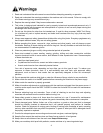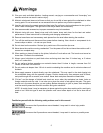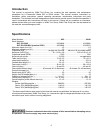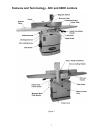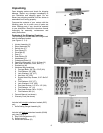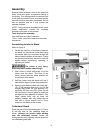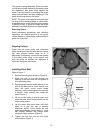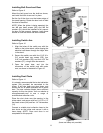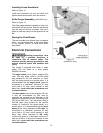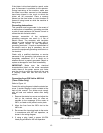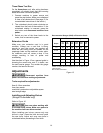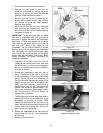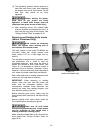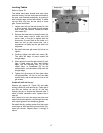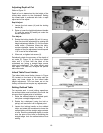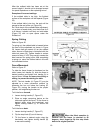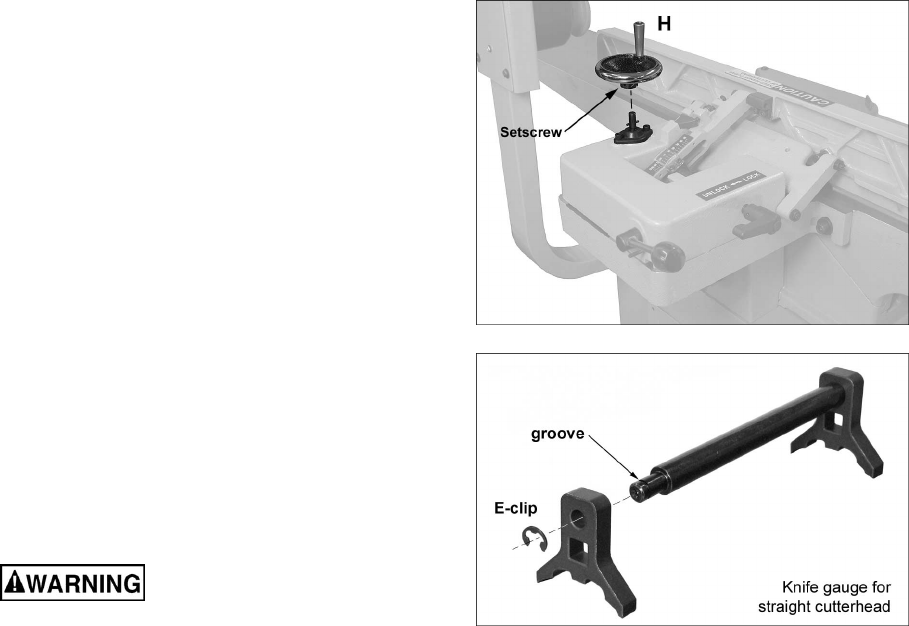
12
Installing Fence Handwheel
Refer to Figure 12.
Install the handwheel (H) onto the shaft, and
tighten the set screw with a 3mm hex wrench.
Knife Gauge Assembly
(model 60C only)
Refer to Figure 13.
The knife gauge assembly consists of a bar, two
end pieces and two e-clips. Slide the end pieces
onto the ends of the bar as shown, and use a
pliers to push the e-clips into the grooves on the
bar.
Storing the Push Blocks
The two provided push blocks have a magnetic
base – you can attach them to the jointer stand
or any metallic surface, to keep them within
easy reach.
Electrical Connections
Electrical connections must
be made by a qualified electrician in
compliance with all relevant codes. This
machine must be properly grounded to help
prevent electrical shock and possible fatal
injury.
The Jointer is equipped with either a single
phase, 230 volt motor; or a three phase,
230/460 volt motor.
The single phase unit is factory wired for 230
volts. You may either install a UL/CSA listed
plug suitable for 230 volt operation, or “hard-
wire” the jointer directly to a service panel. It is
recommended that the single phase jointer be
connected to a dedicated, minimum 20 amp
circuit with a 20 amp circuit breaker or time
delay fuse. Local codes take precedence over
recommendations.
The three phase motor is pre-wired for 230 volt.
It may be re-connected for 460 volts by
changing the connections as illustrated in the
diagram in the starter box (see “Converting from
230 Volt to 460 Volt”). You may either install a
UL/CSA listed plug suitable for the specific
voltage, or “hard-wire” the jointer directly to a
service panel. It is recommended that the three
phase jointer, when operated at 230 volts, be
connected to a dedicated, minimum 20 amp
circuit with a 20 amp circuit breaker or time
delay fuse. When operated at 460 volts,
connect the jointer to a dedicated, minimum 15
amp circuit with a 15 amp circuit breaker or time
delay fuse. Local codes take precedence over
recommendations.
Figure 12
Figure 13
(model 60C only)



